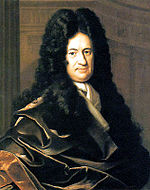History of mathematics (Renaissance mathematics&Mathematics during the Scientific Revolution)
Renaissance mathematics[edit]
During the Renaissance, the development of mathematics and of accounting were intertwined.[127] While there is no direct relationship between algebra and accounting, the teaching of the subjects and the books published often intended for the children of merchants who were sent to reckoning schools (in Flanders and Germany) or abacus schools (known as abbaco in Italy), where they learned the skills useful for trade and commerce. There is probably no need for algebra in performing bookkeeping operations, but for complex bartering operations or the calculation ofcompound interest, a basic knowledge of arithmetic was mandatory and knowledge of algebra was very useful.
Luca Pacioli's "Summa de Arithmetica, Geometria, Proportioni et Proportionalità" (Italian: "Review of Arithmetic, Geometry, Ratio andProportion") was first printed and published in Venice in 1494. It included a 27-page treatise on bookkeeping, "Particularis de Computis et Scripturis" (Italian: "Details of Calculation and Recording"). It was written primarily for, and sold mainly to, merchants who used the book as a reference text, as a source of pleasure from the mathematical puzzles it contained, and to aid the education of their sons.[128] In Summa Arithmetica, Pacioli introduced symbols for plus and minus for the first time in a printed book, symbols that became standard notation in Italian Renaissance mathematics. Summa Arithmetica was also the first known book printed in Italy to contain algebra. It is important to note that Pacioli himself had borrowed much of the work of Piero Della Francesca whom he plagiarized.
In Italy, during the first half of the 16th century, Scipione del Ferro and Niccolò Fontana Tartaglia discovered solutions for cubic equations.Gerolamo Cardano published them in his 1545 book Ars Magna, together with a solution for the quartic equations, discovered by his studentLodovico Ferrari. In 1572 Rafael Bombelli published his L'Algebra in which he showed how to deal with the imaginary quantities that could appear in Cardano's formula for solving cubic equations.
Simon Stevin's book De Thiende ('the art of tenths'), first published in Dutch in 1585, contained the first systematic treatment of decimal notation, which influenced all later work on the real number system.
Driven by the demands of navigation and the growing need for accurate maps of large areas, trigonometry grew to be a major branch of mathematics. Bartholomaeus Pitiscus was the first to use the word, publishing his Trigonometria in 1595. Regiomontanus's table of sines and cosines was published in 1533.[129]
During the Renaissance the desire of artists to represent the natural world realistically, together with the rediscovered philosophy of the Greeks, led artists to study mathematics. They were also the engineers and architects of that time, and so had need of mathematics in any case. The art of painting in perspective, and the developments in geometry that involved, were studied intensely.[130]
Mathematics during the Scientific Revolution[edit]
17th century[edit]
The 17th century saw an unprecedented explosion of mathematical and scientific ideas across Europe. Galileo observed the moons of Jupiter in orbit about that planet, using a telescope based on a toy imported from Holland. Tycho Brahe had gathered an enormous quantity of mathematical data describing the positions of the planets in the sky. Through his position as Brahe's assistant, Johannes Kepler was first exposed to and seriously interacted with the topic of planetary motion. Kepler's calculations were made simpler by the contemporaneous invention of logarithms by John Napier and Jost Bürgi. Kepler succeeded in formulating mathematical laws of planetary motion.[131] The analytic geometry developed by René Descartes (1596–1650) allowed those orbits to be plotted on a graph, inCartesian coordinates. Simon Stevin (1585) created the basis for modern decimal notation capable of describing all numbers, whether rational or irrational.
Building on earlier work by many predecessors, Isaac Newton discovered the laws of physics explaining Kepler's Laws, and brought together the concepts now known as infinitesimal calculus. Independently, Gottfried Wilhelm Leibniz developed calculus and much of the calculus notation still in use today. Science and mathematics had become an international endeavor, which would soon spread over the entire world.[132]
In addition to the application of mathematics to the studies of the heavens, applied mathematics began to expand into new areas, with the correspondence ofPierre de Fermat and Blaise Pascal. Pascal and Fermat set the groundwork for the investigations of probability theory and the corresponding rules ofcombinatorics in their discussions over a game of gambling. Pascal, with his wager, attempted to use the newly developing probability theory to argue for a life devoted to religion, on the grounds that even if the probability of success was small, the rewards were infinite. In some sense, this foreshadowed the development of utility theory in the 18th–19th century.
18th century[edit]
Other important European mathematicians of the 18th century included Joseph Louis Lagrange, who did pioneering work in number theory, algebra, differential calculus, and the calculus of variations, and Laplace who, in the age of Napoleon, did important work on the foundations of celestial mechanics and on statistics.The most influential mathematician of the 18th century was arguably Leonhard Euler. His contributions range from founding the study of graph theory with theSeven Bridges of Königsberg problem to standardizing many modern mathematical terms and notations. For example, he named the square root of minus 1 with the symbol i, and he popularized the use of the Greek letter
 to stand for the ratio of a circle's circumference to its diameter. He made numerous contributions to the study of topology, graph theory, calculus, combinatorics, and complex analysis, as evidenced by the multitude of theorems and notations named for him.
to stand for the ratio of a circle's circumference to its diameter. He made numerous contributions to the study of topology, graph theory, calculus, combinatorics, and complex analysis, as evidenced by the multitude of theorems and notations named for him.

Comments
Post a Comment